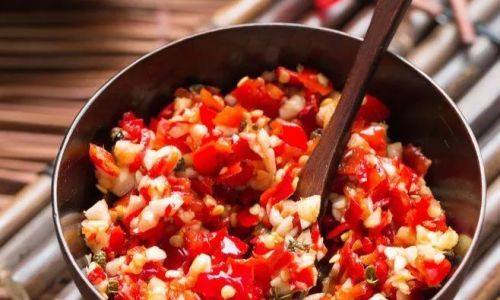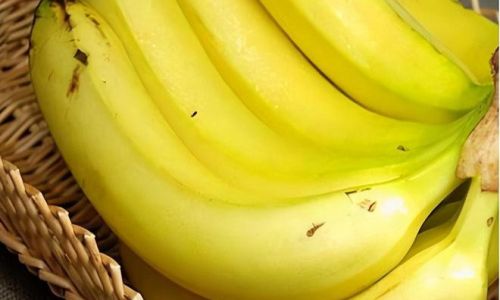Table of content
- 1 The Pepper Puzzle
- 2 Vinegar Varieties
- 3 Sweeteners and Salt
- 4 Aromatics and Spices
- 1 Preparation: Washing and Drying
- 2 Cutting Technique
- 3 Blanching: The Crispness Secret
- 4 The Marinade Ratio
- 5 Packing the Jars
- 6 Sealing and Storage
- 1 Soggy Peppers
- 2 Bitter Aftertaste
- 3 Cloudy Brine
- 1 Spicy Thai-Inspired
- 2 Mediterranean Twist
- 3 Smoky Chipotle
Introduction
Vinegar-marinated red peppers, with their vibrant hue and tangy-sweet crunch, are a culinary gem that elevates salads, sandwiches, pizzas, and even grilled meats. Achieving the perfect balance of crispiness and bold flavor, however, requires precision and technique. This guide will walk you through the process of creating restaurant-quality vinegar-marinated red peppers at home, ensuring every bite delivers a satisfying snap and a burst of zesty flavor. From selecting the freshest ingredients to mastering the marinade ratio, we’ll explore the secrets to making this condiment a pantry staple.
Chapter 1: The Science of Crispiness
Crispiness in pickled vegetables is not merely a texture—it’s a chemical and structural phenomenon. When red peppers are marinated, their cell walls soften due to acidity, but with the right technique, you can retain their firmness. The key lies in minimizing moisture loss and enzymatic breakdown. Blanching, a brief dip in boiling water, denatures enzymes that cause softening, while vinegar’s acidity creates an inhospitable environment for microbes that spoil texture.

Chapter 2: Ingredient Selection
1 The Pepper Puzzle
Not all red peppers are created equal. For optimal crispness, choose firm, glossy peppers with thick flesh. Fresno, cherry, or corno di toro varieties work best. Avoid wrinkled or soft specimens, as they indicate age and may turn mushy during marinating.
2 Vinegar Varieties
The type of vinegar influences both flavor and texture. White vinegar offers a sharp, clean acidity, while apple cider vinegar adds a subtle fruity note. Rice vinegar, with its mild sweetness, is ideal for those who prefer less bite. Experiment with combinations, but maintain a 50:50 ratio of vinegar to water to prevent overwhelming the peppers’ natural sweetness.
3 Sweeteners and Salt
Sugar balances acidity and enhances crispness by drawing moisture from the peppers’ cells. Use granulated sugar, honey, or agave syrup. Kosher salt is preferred for its coarse texture, which dissolves slowly and seasons evenly.
4 Aromatics and Spices
Garlic, black peppercorns, bay leaves, and fresh herbs like thyme or oregano add complexity. For heat, include sliced jalapeños or red pepper flakes. Sichuan peppercorns impart a numbing tingle, while mustard seeds offer a mild peppery kick.
Chapter 3: The Marinating Process
1 Preparation: Washing and Drying
Thoroughly wash peppers under cold water to remove dirt and pesticides. Pat dry with a clean kitchen towel or paper towels. Even traces of moisture can introduce bacteria, leading to spoilage.
2 Cutting Technique
Slice peppers into uniform rings or strips. Remove seeds and membranes to reduce bitterness. A sharp knife ensures clean cuts, minimizing cell damage that softens texture.
3 Blanching: The Crispness Secret
Blanch peppers in boiling water for 30–45 seconds, then immediately transfer to an ice bath. This stops enzymatic activity and preserves color and crunch. Over-blanching results in mushiness, so timing is critical.
4 The Marinade Ratio
A classic marinade combines:

- 1 cup vinegar (white or apple cider)
- 1 cup water
- 1 tbsp sugar
- 1 tsp salt
- 2 garlic cloves, sliced
- 1 tsp black peppercorns
Adjust sweetness and acidity to taste. For a sweeter profile, increase sugar to 2 tbsp. For extra tang, use 1.5 cups vinegar to 0.5 cups water.
5 Packing the Jars
Layer blanched peppers with garlic and spices in sterilized jars. Press down gently to remove air pockets. Pour hot marinade over the peppers, ensuring they’re fully submerged. Leave ½-inch headspace to prevent overflow during sealing.
6 Sealing and Storage
Wipe jar rims, apply lids, and tighten bands fingertip-tight. Process in a boiling water bath for 10 minutes (for pint jars) to seal. Alternatively, store in the refrigerator for a quicker, non-canned version. Refrigerated peppers last 3–4 weeks; canned ones up to a year.
Chapter 4: Troubleshooting Common Issues
1 Soggy Peppers
Cause: Insufficient blanching, overripe peppers, or too little vinegar.
Fix: Increase blanching time by 15 seconds and ensure peppers are fully submerged in marinade.
2 Bitter Aftertaste
Cause: Inadequate seed removal or over-marinating.
Fix: Scrape out membranes thoroughly and taste after 24 hours.
3 Cloudy Brine
Cause: Undissolved salt or sugar, or impurities in vinegar.
Fix: Use filtered vinegar and stir marinade until sugar and salt dissolve completely.
Chapter 5: Flavor Variations
1 Spicy Thai-Inspired
Add lemongrass, ginger, and bird’s eye chilies. Substitute rice vinegar and a splash of fish sauce for umami depth.
2 Mediterranean Twist
Include sun-dried tomatoes, capers, and oregano. Use red wine vinegar and a drizzle of olive oil.

3 Smoky Chipotle
Roast peppers before marinating and add adobo sauce from canned chipotles. Balance with honey and lime juice.
Chapter 6: Serving Suggestions
- Antipasto Platter: Pair with olives, cheeses, and cured meats.
- Pizza Topping: Add to Margherita pizza for a tangy kick.
- Grilled Proteins: Top chicken or fish with marinated peppers and a squeeze of lemon.
- Sandwich Boost: Layer in subs or wraps with prosciutto and fresh mozzarella.
Chapter 7: Health Benefits
Red peppers are rich in vitamins A and C, antioxidants, and dietary fiber. Vinegar aids digestion and may help regulate blood sugar levels. This low-calorie condiment adds flavor without guilt.
Conclusion
Creating crispy, flavorful vinegar-marinated red peppers is an alchemy of science and art. By selecting quality ingredients, mastering blanching, and balancing flavors, you can craft a versatile condiment that enhances countless dishes. Experiment with spices, adjust sweetness, and share your creations—your taste buds (and guests) will thank you.
Final Tips
- Label jars with dates to track freshness.
- For gift-giving, decorate jars with twine and custom tags.
- Use leftover marinade as a salad dressing base.
With patience and practice, you’ll soon produce vinegar-marinated red peppers that rival gourmet store-bought varieties. Happy pickling!






0 comments